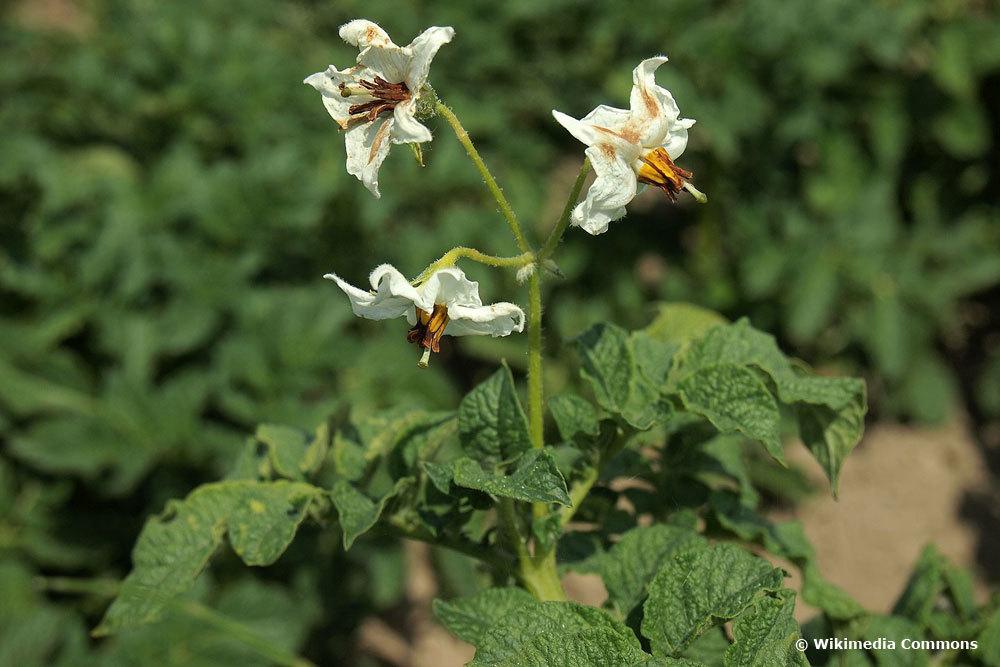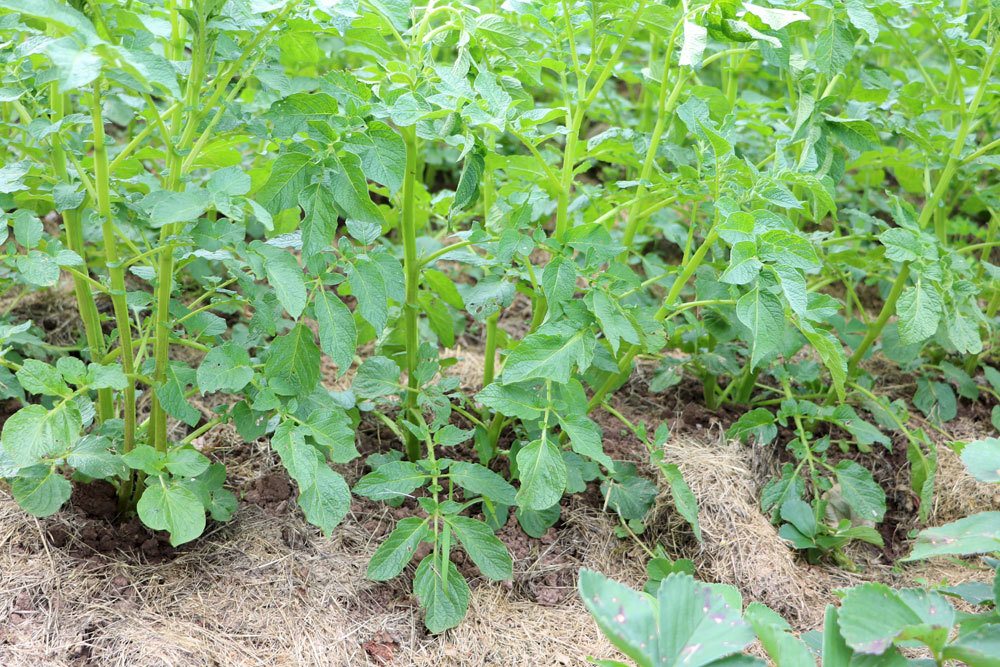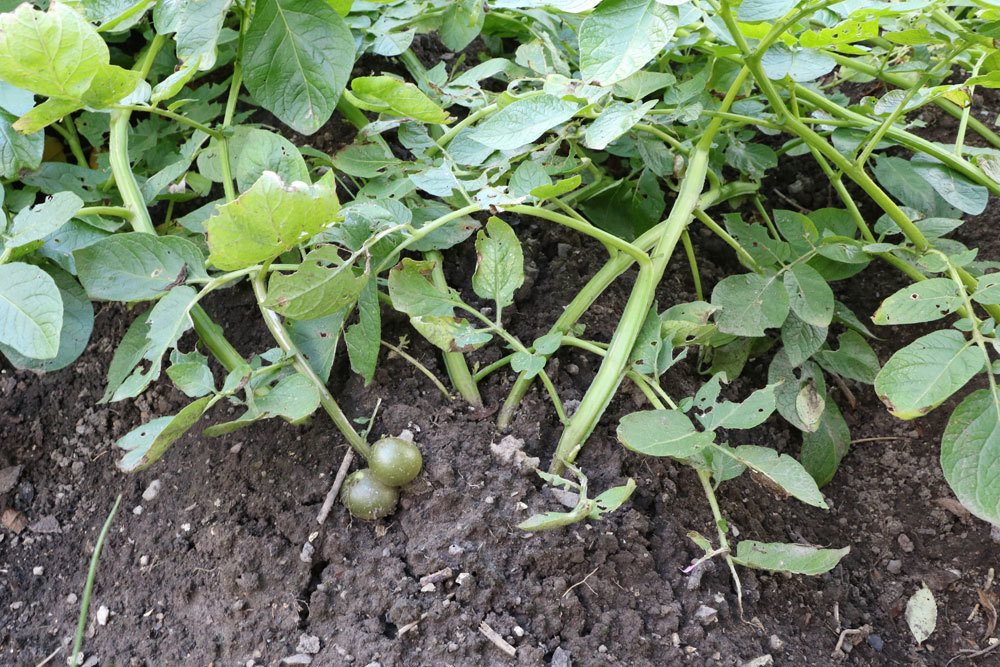The underground root tubers of the potato (Solanum tuberosum) are a particularly valuable staple food that is on the menu almost every day. But what about the tubers when potato plants do not develop flowers?
- Flowering initiates fruiting and tuber growth
- Flowering tendency varies depending on the variety
- tuber growth is controlled by a flowering hormone
- some varieties flower longer, others not at all, less or shorter
- potato flowering can be completely or partially absent due to unfavorable conditions or care errors
Potato plants do not need to bloom for the tubers (potatoes) to form and develop beneath the soil. While it’s common for potato plants to produce flowers, the presence or absence of blooms doesn’t significantly affect the potato harvest. In fact, many potato varieties produce flowers as part of their natural growth cycle, but some may not.
The primary focus for growing potatoes is the development of healthy underground tubers. As the potato plants grow, they store energy in these tubers. The flowers on potato plants are a secondary aspect of the plant’s life cycle and are not directly related to potato production.
Here’s how the growth process typically works:
- Emergence and Vegetative Growth: Potato plants emerge from the soil as sprouts (eyes) on seed potatoes or tubers. These sprouts grow into leafy plants, and the energy from the seed potato fuels this initial vegetative growth.
- Tuber Formation: As the potato plants grow, they begin to store energy in the form of starch in the tubers. This process primarily occurs underground and doesn’t depend on flowering.
- Harvest: Potatoes are typically ready for harvest when the above-ground portion of the plant begins to die back. The actual harvest involves digging up the tubers from the soil.
While potato flowers can be attractive and add to the aesthetics of the garden, they are not necessary for a successful potato harvest. The primary factors for a good potato yield are providing the right growing conditions, maintaining consistent soil moisture, and protecting the plants from diseases and pests. Potatoes can be grown successfully with or without blooms, and the focus should be on the development of healthy tubers beneath the soil.
Contents
- 1 Potatoes bloom
- 2 Potato flowering does not occur?
- 3 Factors that affect flowering
- 4 Seasonal temperature variation
- 5 Drought and waterlogging
- 6 Soil conditions
- 7 Nutrient deficiency
- 8 Diseases and pests
- 9 Frequently asked questions
- 10 When is flowering time for potatoes?
- 11 Do potatoes necessarily have to flower?
- 12 Why do the flowers fall off?
- 13 Author
Potatoes bloom
Potato plants form flowering plants, from which the fruits develop. These are not the tubers, but above-ground, small, green, cherry-sized and poisonous berries that contain the seeds.

- plant’s own hormone controls flower formation
- influenced by temperature and day length
- with beginning of flowering, development of above-ground plant parts largely completed
- Growth shifts from leaves to tubers
- stolons (runners) stop growing lengthwise
- they develop shoot tubers (thickenings)
Potato flowering is between June and September, depending on the variety. Many small tubers have already formed during potato flowering, but they still have to increase in volume vigorously until full maturity. Generally, flowering is not necessary for tuber growth.
Tip: Early potatoes can be harvested during the flowering period due to the shortened growing season. All others only when the foliage is completely wilted.
Potato flowering does not occur?
Basically, the tendency to flower varies among the numerous potato varieties and can vary from year to year. Thus, it can happen that not all plants develop flowers or that they are only weakly formed. Tubers usually form anyway, but remain somewhat smaller.
Flowers do not play a role in the harvesting of early potatoes. The situation is different for table potatoes that are to be stored over the winter. For these, flowering should be completed by harvest and the foliage completely wilted. However, there are also varieties that generally do not flower. The reason for this is usually overbreeding. However, diseases, pest infestation or poor cultivation conditions can also restrict or prevent flower formation.
Factors that affect flowering
Seasonal temperature variation
Thanks to a sophisticated system, the potato plant is able to distinguish between short and longer days. It is one of the so-called long-day plants. They flower as soon as the nights fall below a certain number of hours. As for temperatures, potatoes thrive best at temperatures between 18 and 25 degrees. Temperatures above 30 degrees can affect plant growth and, consequently, potato flowering. Consequently, they should be in the ground until May at the latest.

Drought and waterlogging
Prolonged drought and waterlogging are not good for potatoes. Both inhibit the plants in their development and thus also the flower formation.
- Drought leads to undersupply
- Flower formation may be absent or significantly weaker
- Makes plants more susceptible to diseases and parasites
- In the worst case, causes them to die
- Water potatoes as a preventive measure, especially if the drought persists
- About every two to three days
- When watering, keep the leaves dry and water only the root area. Water requirements are highest during the period from emergence to flowering. Emergence is when the seed has germinated and the plantlets become visible.
Soil conditions
Ideally, the soil pH should be between 5.5 and 7.0 and have a low salt content. Lower values may limit the availability of nutrients such as phosphorus. Also, if the pH is higher than 7.5, micronutrients and phosphorus may be limited in availability even though the total percentage of nutrients in the soil is high. In addition, plants are then more susceptible to powdery scab. If the values are particularly high or low, the soil should be adjusted if possible. Low values can be improved by liming. However, liming should be done at least six months before planting.
Nutrient deficiency
As heavy feeders, potatoes extract considerable amounts of nutrients from the soil.
Drought, among other things, can be responsible for a nutrient deficiency; the plants can hardly absorb phosphorus, which is responsible for tuber growth, from the soil. However, in addition to phosphorus, nitrogen and magnesium are also among the main nutrients. A deficiency shows on the complete plant or the tubers. However, deficiency symptoms occur rather rarely.
Tip: Potatoes should be grown in a different location every year, or at the earliest after four years in the same place. During this time, the planting of medium and weak growers is suitable there.

Diseases and pests
Some diseases and pests can be responsible for severely limited or absent flower formation and develop stunted tubers. In terms of flower formation, the most notable are the so-called Verticillium wilt and blackleg, especially at an early stage. If the plants are infested, they age prematurely and die, so that flower formation does not occur. Potato pests usually attack the young shoots and leaves but also the flower buds, for example, black aphids and mites.
Frequently asked questions
When is flowering time for potatoes?
Early potatoes show their flowers from about the end of April to the beginning of June, medium-early in June and late varieties from August. Basically, the flowering period ranges from June to September.
Do potatoes necessarily have to flower?
It is not uncommon for potatoes to have little or no flowering, and in most cases this has little effect on tuber growth. In the case of early potatoes, blossoms are rather secondary; they are harvested when the leaves are still green. For table potatoes that are to be stored, flowering should be as complete as possible and all above-ground plant parts should have wilted. This ensures that the tubers are ripe and therefore suitable for storage.
Why do the flowers fall off?
The flowers wilt relatively quickly and fall off. But it does not matter, because the main purpose of the potato flower is the formation of fruit and seeds. And fruits are not the tubers in the ground, but the green berries growing above ground.


